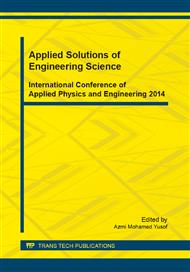p.51
p.58
p.63
p.68
p.73
p.81
p.95
p.100
p.106
Enhanced Horizontal and Vertical Resolution in 4-D Electrical Resistivity Tomography for Environmental Slope Study in Penang Island
Abstract:
This paper presents 4-D high resolution electrical resistivity tomography study for slope monitoring using two optimized (modified) arrays of the Wenner-Schlumberger and Pole-Dipole. These optimized resistivity arrays give a total of 2052 number of datum points from each data acquisition set. These two optimized were used because they have more datum points compared to their original arrays. Perhaps these optimized arrays were able to resolve the subsurface structures from surface areas. Inversion results from the computer (mathematical models) suggested that these optimized arrays were able to give in imaging the Earth’s subsurface structures and characterization at different period of time. Furthermore, in this paper, we are presented merging data levels in order to give high resolution in electrical resistivity tomography. Even though the time taken for data acquisition using this technique is twice, the outcome is compromised and reliable which helpful in the Earth’s subsurface interpretation.
Info:
Periodical:
Pages:
73-80
Citation:
Online since:
October 2014
Authors:
Price:
Сopyright:
© 2014 Trans Tech Publications Ltd. All Rights Reserved
Share:
Citation:


